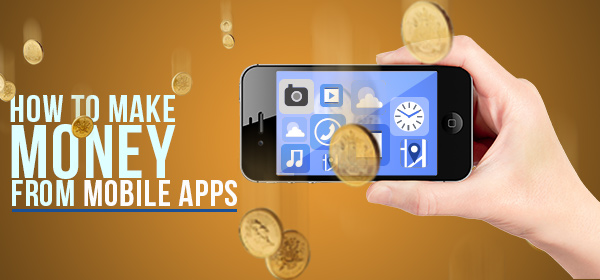Mobile app development has become a blazing reality in recent times especially for companies that dream about achieving greater goals. Due to its burgeoning demand in modern times, having a mobile app means a solid boost to business growth. However, not every user will download and use your app. With mobile app development touching the saturation point, app stores are now cramped with plethora of apps, creating a tough competition.
It is a valid argument that marketing your mobile app impacts its success, but does your mobile have ability to attract instant attention? Your app must stand out and look attractive to users. If the app has aesthetic appeal, users will come swarming in to try your app. The following discussion uncovers the secrets of making your app more attractive.
To start with, every UI/UX designer must ask these crucial questions to ensure their app design reflects creativity and beauty.
- Does the app design appear aesthetically pleasing?
- Is it created with user-friendly colours?
- Does UI feel intuitive when tried?
- Does it offer fluid navigation to users?
- What about the consistency of design elements?
- Does it load and open fast?
- Does it provide smooth transition?
- What makes it different from rival apps in the app store?
- How impressive was the user experience?
- Does it function properly across all the devices?
- Is your app highly recommendable for wider group of users?
To address all these questions confidently and make the app design look really good, here is what you can do:
1. Titillate Your Users:
Users are in your app to have an extraordinary experience, a kind of journey no other app can offer. You must, as a mobile app developer, understand what users prefer, where exactly the design trends are going and what would trigger their interest. Scour the app market and study some of the best successful apps and learn what you can do to emulate them.
Try to make a list of everything that you find amazing in their apps, including images, typography, colours, icons and navigation techniques, etc. Then make your own strategy as to how you can come up with a brilliant design that has it all. If you have spent good years in mobile app design job, you should have pretty-faced ideas to titillate users with great features and finest functionality. Understand the nerve of today’s rapidly evolving users and what could motivate them to consider your app. The best of designs are prepared mostly in the initial state of conceptual creative planning. Once you finalize your design, don’t attempt to change it now and then.
2. Easy-To-Use Design Model:
Despite the fact that more than half the world is down to using smartphones and various apps, you can still not think that everyone of them is savvy. There are still good amount of people who find using certain features of mobile and apps considerably tedious to use. This is why having a design that provides the ease of use is essential.
Things about mobile app development and its design are changing every day, and so are its features and facilities. Every app differs from another app in terms of gaining access to data or navigation. So there will always be certain people who are not as deft as others might be. Hence, it is a good approach to keep app design model easy-to-use and simple.
3. Offline Functioning Of App Design:
Many informative apps work offline with a strategy of providing more exclusive data when users come online. Nowadays, users tend to choose those apps that allow them to explore it even when their device is not connected to internet. Such apps whose usability remains intact during offline mode are best loved by users.
Offering the consistent users experience online and offline also makes your app emerge attractive among users. Evernote, Google docs, Onenote and many other apps allow users to work on their information even when they are not connected to any nearby Wi-Fi. If you are an entrepreneur or a part of an app design team, you should consider integrating this practice in your next development strategy.
4. Let Users Connect With Its Simplicity:
After you are ready with the UI of the app design, share the rough draft of it with some of your friends or families who are not technically skilled. They are, in this case, more like end users. Give them complete freedom to explore and judge various elements of your app design and see how it goes. If they call it intuitive experience, you can say you have placed your efforts in the right direction.
In order for users to connect with your app, you need to practice keeping things simple. From buttons to menu tabs and call-to-actions, every part of it matters and requires your sober attention.
5. The Grid Logic:
Grids in app works like an organizer and delivers consistent user experience at the moment of exploring different pages of the app. When you switch from one page to another, grids make sure users never lose consistency and visual connection while they engage and shuffle through its pages.
It is advisable for mobile app designers and developers to prepare the sketches of grids for graphic design. This way the user experience will be more organized, visually proper and unified across the entire all the app pages.
6. Magical Effects of Colour
Mobile app design process is incomplete without a thought of colours and their perfect suitable combination for the app. Your choice of colours is vital as it can decide the fate of your app and add magical effects to it. The choice of colours, however, depends on the genre of your app and user base. For productivity apps, light colours make it easy to read long texts. Bright contrast colours appeal most to gaming apps and entertainment whereas darker shades work best for media.
Colours can also be used for highlighting the different parts of the app. For instance, if users hover over an item in a main menu bar at the top, they can see its colour change and glow darker – which indicates they have selected the option.
Colours not only make the app attractive, but it also helps create seamless experience for users.
7. High Resolution from Points and Pixels
While designing, one point one should shift their focus on is space division of display. Points and pixels are the deciders of how the final image of an app is going to appear to users as they play with its interiors on their screen. Points and pixels together determine the overall resolution.
A designer should think of pixels which are the smallest dots on space on the screen, hardly visible yet important. The good density of these pixels creates a finest image. To achieve high resolution and clarity, more number of pixels should be placed in a display. Points are units of space that contain certain amount of pixels, making up a display.
Thus, a mobile app designer should control points throughout the entire design process to deliver high-resolution viewing experience for users. Higher the resolution, more attractive will be your app interiors.
8. Give a Shape to a Beautiful Icon
The app icon is something that creates the first impression on users’ mind. The icon is the first aspect of your app that viewers will realize. Apple uses golden ration grid system in the app store to accommodate the unique elements of the icon’s design in a way that looks gorgeous and fascinating. The main purpose behind creating an attractive app icon is to draw maximum attention from the viewers and inspire them to download the app.
Mobile app designer has ample control over how they would like their app icon to look. There is a technical system that helps them create icons that catch myriad eyes.
9. Champion Responsiveness
People have all different kinds of devices where they expect your app to function consistently. This means that your app must offer proper responsiveness and optimal viewing experience on various screen resolutions of mobiles, tablets, etc. Responsive design of an app ensures the users will have equally delightful experience irrespective of the device they choose. A mobile app development company who has years of experience in building excellent mobile apps would know the importance of making their apps responsive and perfectly optimized to all sizes of screens.
10. Get Just One Thing Right
In an effort to make the app famous and attractive, certain mobile app developers often fall for the wrong design approach. They tend to cram many options and features into one single app which may result into good amount of confusion and complications when used on a small touch screen.
While designing any app, one must remember to focus on the core purpose of the app. They should bear the idea of touching primary requirements of users and integrating features that users will definitely connect well with. Many options can divert users from the desirable user experience. Hence, to make the app attractive, serve them what they would indulge in.
Conclusion:
A great app idea will not do much good until it turns into a great app design, and a great design is every mobile app company’s dream. For cross platform mobile app developers, app design is a primary challenge as it has to be accepted by Google Playstore as well as Apple store. As for Apple, it never approves of a design that looks mediocre through their review process.
If your app development plan also involves generating revenue, the design becomes amply important. Apple is quite punctilious and rigorous about the design standards of every app that gets published in iOS store. Their reviewers insist on having a high-quality design interface that helps users interact with its content.
However, whether it is for Android or iOS, mobile app designer should focus on above guideline to make the best out of their work.


















